How OSHA Paved The Way For The CMMS Today
Workplace safety is critical. And managing maintenance (especially preventative) is a HUGE part of ensuring that safety. But if it weren’t for OSHA, facilities might not be accountable for safety in the way they are today and a CMMS like FacilityONE might not even exist!
In celebration of OSHA’s 47th birthday this month let’s take a look at the monumental steps OSHA has taken to ensure safety for every worker in every building in the United States.
- Accountability
OSHA(Occupational Health and Safety Administration) was officially formed on April 28, 1971. With its mission to “assure safe and healthful working conditions for working men and women by setting and enforcing standards and by providing training, outreach, education and assistance” it created an accountability factor to all employers. According to OSHA.gov, “it is estimated that [previous to the OSH Act]around 14,000 workers were killed on the job annually. Over OSHA’s first 40 years, that number fell to around 4,000.” Enforcing accountability for health and safety standards has come to save about 10,000 lives per year and that number is expected to keep on growing!
- Health and Safety Standards
Your ability to document fire safety information, protect your eyes and ears, ensure best practices for handling electrical equipment or even handle poultry the right way–all exist thanks to OSHA. A day’s work is never done, but the value of human life and safety over the value of “just getting it done” is a practice that has incentivized every industry in the United States to stop and look around for a moment. With over 2400 inspectors nationwide and a compliance assistance program, OSHA works with employers to ensure these health and safety standards year-round. So the next time you follow a lockout-tagout procedure so that you aren’t maimed or electrocuted, give a quick tip of the cap to OSHA for implementing standards to keep you safe!
- Record Keeping Requirements
OSHA’s record keeping requirements are designed to help employers recognize workplace hazards and correct hazardous conditions. By keeping track of work-related injuries and illnesses and their causes, trends are able to be tracked and preventative measurements are able to be enacted. Incident reporting is a critical feature of mitigating liability and ensuring safety and it is no coincidence that OSHA exists as a driving force behind this initiative. Thanks to record keeping requirements, trial and error at the expense of human health and safety is a thing of the past and that information exists to be analyzed so that future risks can be diminished.
- Worker’s Rights
You know all those cheesy daytime TV commercials with fly-by-night lawyers asking if you were injured on the job? While those ads may be in bad taste and some may take advantage of this liability, the reasons behind them are invaluable. Employers have a responsibility to implement best practices and spread information to all employees about safety on the job. And employees have every right to draw attention to you if you shirk that responsibility. Cutting corners is no longer acceptable and OSHA is here to ensure that practice goes out the window. Knowing this accountability is high-stakes, it is incumbent on employers to manage their facilities with that responsibility in mind. Using a CMMS to ensure things like proper maintenance, incident reporting, record keeping, and documenting critical safety information is a strong step towards mitigating liability and protecting the rights of your workers. OSHA would be proud of you!
Contact sales@facilityone.com to see how you can follow in OSHA’s footsteps to keep your facilities safe, healthy, and operationally fit!
